There are moments when you are exploring a new destination that you think, “why didn’t anyone tell me about this place before?” For Slovenia, I had that moment while exploring the Škocjan caves, which is a UNESCO site. We had just come out of the Silent Cave and were entering the Murmuring Cave, one of the largest known underground river canyons in the world. I knew at that moment that more people should come to Slovenia.
I spent a week touring Slovenia. It was a week filled with caves, castles, hikes, horses, and history. Here is why I think Slovenia doesn’t get the love it deserves.
Table of contents: ()
Where is Slovenia?
Don’t be too embarrassed if you aren’t sure where Slovenia is. Slovenians told me that sometimes Italians aren’t sure… and they are the country next door. Slovenia was a part of the former Yugoslavia and, before that, the Austro-Hungarian Empire. It is neighbored by Italy, Croatia, Austria, and Hungary. It is smaller than all but the 3 tiniest states of the United States: Connecticut, Delaware, and Rhode Island.
Slovenia has been in the European Union since 2004 and uses the euro as its currency.
Itinerary
Ljubljana
I flew to the airport in Ljubljana, which is the main airport in the country. It is located about 20 minutes outside of the city.
Ljubljana is a beautiful city, although my visit was in April, which has changeable weather. The weather the week before and the week after my trip was sunny, but I saw much of Slovenia in between rainstorms. I took a walking tour of the city, and my guide said that the city streets fill up with locals when the sun is out, but the city hibernates on rainy days.
A major earthquake in the 1500s destroyed much of the downtown. When it was rebuilt, much of it was rebuilt in the baroque style. As the city expanded in the 1920s, much of the new construction was in the style of Art Nouveaux.
In the city’s medieval core, you can still see traces of the city’s history that goes back at least to the time of the Roman Empire. When you stand by the marker dedicated to the brief rule by Napoleon, note the curved houses of the buildings across the street that still retain the shape of the Roman hippodrome. At one end of Congress Park, there is a Roman sarcophagus that was found nearby.
The river Ljubljana cuts through the city, and one of its most famous sights is the Triple Bridge designed by architect Jože Plecnik.
While you are in the Old town, you can also check out the large daily market and the city’s baroque cathedral.
The trails or the funicular up to the castle for the city’s best views. In the summer, arrive earlier in the day or walk up to avoid the long lines at the funicular. Even on a rainy day, the tower of the castle is worth the climb for views of the city.
Idrija (UNESCO)
There are 13,000 caves in Slovenia, and I was told in the mining town of Idrija that when Slovenians don’t find a hole in the ground, they will dig one. Idrija was a center of mercury mining.
In 1490, a local tub maker found a very odd liquid metallic substance. When he took it to a goldsmith in nearby Loka, he was told: “oh, that’s not very valuable… but where did you say you found it.” But the substance was mercury which was important, among other reasons, because it was used in the extraction of gold in gold mining.
It quickly made the town wealthy, but according to a local story, that came to the attention of the local ruler when the town loaned him a fairly large amount of money in exchange for the right to build a caste. Carl Archduke of Austria bought the mines in 1575, and the mines remained a major source of income for whatever country Slovenia was a part of until all Mercury mining was shut down in 1995. Slovenia joined the EU in 2004, where all mining, import, exports, and most uses of mercury have been banned.
The city’s castle, Gewerkenegg castle, was owned by the mining company and now contains a great museum about the history of mercury mining in the area. Look for the exhibit that shows a steel ball floating in a bowl of mercury, which demonstrates how heavy mercury is. If you get a chance, lift up a chunk of mercury ore, called cinnabar, because of its red color. Because of the danger of breathing mercury vapors, it was this mercury ore that miners were looking for, and they tried to avoid any liquid mercury deposits that they found. They burned the cinnabar to produce pure mercury. The life expectancy of a miner was only 40 years.
You can also find a display about lace-making in the Gewerkenegg castle because while the men were down in the mine, the women were making lace. That handmade lace-making tradition continues in the city today.
The mines in Idrija are part of a two-part UNESCO site showing the history of mercury mining along with Almaden in Spain, which was the world’s largest mercury mine and dates back to Roman times.
You can still tour the mine shafts of the old Antonijev Rov Tourist Mine. You don a hard hat and descend into the old mine with a guide. The earliest miners carved these tunnels slowly with a hammer and a chisel. As such, they dug as little as possible and worked on their knees in tunnels half the height of a man. Later, tunnels were blasted with black powder and then dynamite before the final days of mining when pneumatic drills were introduced. I was glad for the hard hat as I had to duck the ceilings too low for my 6’3” frame and bounced my head off the rocks on the ceiling at least a dozen times. You do need to be able to climb about 300 steps to take this tour, but it is worth it if you are able.
While exposure to mercury was definitely going to kill you, the miners did not have the same risks of explosions from natural gas pockets that coal miners would have. They did still have a risk of flooding and of fire. On one occasion, a large fire was started by a lantern that caught the timbers of the mine of fire. The only way to put out the fire was to divert a nearby river into the mine. That shut the mine down for half a year.
While in Idrija, look for two churches, or rather one church and one missing church. The town’s main church dedicated was dedicated to a patron saint of miners St Barbara. The uniforms of the mining company band and the tour guides today both have 23 buttons in commemoration of St Barbara’s martyrdom at the age of 23. But St Barbara’s church was destroyed in a British bombing raid in WWII and was not rebuilt under communist Yugoslavia. High above the town, you can see the small church dedicated to St Anthony of Padua, who is a patron saint of miners and single people.
- Book Your Accommodation HERE
- Search for Great Tours HERE
- Buy Travel Insurance
- Get an eSim to be able to use your smartphone abroad.
- Get a universal plug adapter
- Get a Car Rental

Franja Partisan Hospital
Slovenia, like the rest of the former country of Yugoslavia, is proud of its ability to liberate itself from German occupation at the end of WWII. That historic fact also gave Yugoslavia more independence in the post-war years from either the east or the west in the Cold War. While it was a communist country, it charted an independent course from the U.S.S.R. under its leader Tito.
Because it had such a large number of partisans fighting for its freedom, it also had an unusual network of secret hospitals that treated the wounded. You can still visit one of those, which is the Franja Partisan Hospital.
Franja Partisan Hospital was located in a remote gorge and even today, getting there is half the fun. Be glad that you aren’t carrying a litter with a wounded soldier up the gorge as the litter bearers had to do. To preserve the secrecy of the hospital, they also only carried in the wounded at night and blindfolded them, friend and foe alike. They even spun them around a few times to disorient them.
Even if you are not s history fan, if you are physically fit-ish then you will enjoy the adventure of the hike from the small parking lot up the gorge. The trail is well interpreted with signs in English and Slovene. The signs will point out where some of the defenses, such as bunkers up the sides of the cliffs.
What surprised me was that when I finally reached the hospital, I found comfortable cabins and even X-ray equipment and an electric generator. All the materials to build the hospital were lower from the side of the gorge. The hospital was attacked twice by the Germans and was abandoned for a time in 1944. Many of the original cabins were destroyed in a flood in 2007 but were reconstructed. The hospital was able to save all but 78 of the roughly 500 patients that they received.
Predjama Castle
Predjama Castle may not be the most historically significant castle, but it is one of the most photogenic as it is built into the mouth of a cave on the side of a cliff. It is most well-known for its previous owner Erasmus of Lueg, who was a robber baron, Robin Hood-like character.
When he killed one of the king’s favorite nobles, he retreated to Predjama Castle where he held out against a siege. What the besieging soldiers did not know was that Erasmus had a secret entrance out through the back of the cave. So while they were hoping to starve him out, he would pelt them with fresh fruit and vegetables.
He was eventually betrayed by one of his own men who lit a candle to identify when Erasmus was in the privy, which allowed the besiegers to target him with artillery and kill him in this thinly walled portion of the castle.
Erasmus is buried beneath a plane tree at the small church near the castle.
The castle has some cozy living areas and some less cozy areas like a torture chamber.
Postojna Cave
Postojna Cave is the easier to visit of the two caves that I saw in Slovenia. The cave has been welcoming tourists, including kings, queens, and presidents, since 1818. The cave was equipped with a train system back in 1872. The cave was lit with electric lights in 1884, before Ljubljana.
It currently features an electric train that takes you 15 minutes under the mountain at the start of your tour. Visitors with mobility issues can opt to just take the train in and out for a 30-minute round trip, but most visitors will then do an hour-long walking tour of the caverns, stalactites, and stalagmites of Postojna Cave. The cave is a constant temperature of 10 °C year-round.
Photography in the dim light of the cave is challenging, so I feel like my photos don’t do justice to the beautiful interior of the cave. Flash photos are not permitted as they encourage the growth of funguses that can destroy these fragile formations. The formations only grow at a rate of around 1 mm a year, so the large formations are hundreds of thousands of years old.
Škocjan Caves (UNESCO)
To be honest, I did not want to enjoy the Škocjan Caves. The park does not allow photography inside, which annoyed me. Unlike the train ride in the Postojna Cave, Škocjan will require you to climb 500 stairs up and down.
You start with a 10-minute walk from the visitor’s center down to the entrance of the Silent Cave. The Silent Cave was discovered much later than the main cavern. It is a “dry” cave, which is to say it does not have a river running through it as the Murmuring Cave does. Compared to Postojna Cave, its stalactites and stalagmites are not quite as spectacular, so right around this part of our tour, I thought I would be recommending to skip Škocjan Caves.
The moment when we left the Silent Cave and got to where we could see the underground Reka River gorge is when my recommendation went from “you can skip this” to “this is the highlight of my trip.”
I am not surprised to feel some claustrophobia when visiting a cave, but it was the first time that I have ever felt acrophobia. We were suddenly high up the wall of a misty river gorge lit here and there by lights along the path which clung to the other side of the canyon. Further up the cave wall, you could see the “oh hell no” path that the original tourists took, which clings even more tenuously to the side of the chasm. We crossed to the other side on a bridge high above the river.
I would not be the first to say that I suddenly thought I had been transported to the Mines of Moria in Tolkien’s Lord of the Rings.
There are fewer stalactites and stalagmites in this portion of the caverns because when the river swells from heavy rain, the entire chamber can fill with water, covering or even washing away the paths and bridges.
The cave exit is one of a couple of large sinkholes where the cave ceiling collapsed, Pictures are allowed in that area, and even just that area is stunningly beautiful. There is a funicular that you can take part way back to the visitor’s center.
Lipica
If you are a lover of horses, you have heard of Lipica, even if you don’t realize it. Or at least you have probably heard of the famous Lipizzaner horses that are named for this small village. For centuries this was the center for breeding and training the horses for the Austria-Hungarian court, but when the country was broken up after WWI, the herd was split between Vienna, Slovakia, and Slovenia.
Because the total number of Lipizzaner horses is small, they are bred with great care. Every stallion has a sign above his stall that shows his registration number and the 1st initial from its sire’s bloodline, followed by the name of its dam. There are 4 main bloodlines for Lipizzaner
You can still see these mostly white horses (technically grey horses with white hair) being put through their paces in an indoor arena.
You can also go riding, but their riding program is targeted toward experienced riders. My one ride in Lana’i did not really qualify me. They do offer Shetland pony rides for the kids in the summer.
Piran
Slovenia has a small slice of coast at Piran on the Adriatic coast between Trieste, Italy, and Croatia. But what it lacks in quantity, Slovenia makes up for in quality. Piran is a lovely old Venetian city that has a church on the hill and old town walls.
April was a great time of year to visit much of Slovenia to avoid crowds, and that was especially true in Piran and Lake Bled, which get a disproportionate amount of Slovenian tourism. The city’s old town square was quiet. You can easily circumnavigate the entire old town in around 20 minutes, but it seems to me to be a better place to linger than my whirlwind itinerary allowed for. There are also walking and food tours available in Piran.
While you are in Piran, one unusual ancient tradition that continues is the harvesting of salt from nearby Sečovlje salt ponds. You can tour the salt ponds and a small museum about the production of salt. Even if you don’t appreciate the historic significance of salt, the area is rich in waterfowl that are attracted to the marshy surroundings. Back in the day, many families would move out from the town to huts by the salt ponds for the summer to tend their white gold.
A newer industry that you can tour just offshore near the salt ponds is the Fonda fish farm. This family-run company is looking to change the understanding of sustainable fishing by producing a tasty alternative to importing fish from halfway around the world. Visitors can visit by boat or kayak or can even take cooking classes at Fonda. I did try the fish but did not have time to visit the farm on my trip.
Kamnik and the Velika Planina
My trip headed me back towards Ljubljana to the well-known Lake Bled, but on the way, I made a visit to the high alpine pastures of Velika Planina.
Near the city of Kamnik, some of the cow herders still take their cattle to the high alpine pastures in the summer, just like in the movie and book Heidi (kids google it). But these days, they are joined by tourists who take a cable car ride up to the pastures to stay in huts fancier than those traditionally used by herdsmen.
Slovenians love to hike. That’s a good thing because the western part of the country is hills, valleys, and mountains. From the locals that I talked to it seemed common that a baby would be taken on their first hike long before they take their first step.
My trip to Velika Planina was on a foggy day after a late snow when the sun made only occasional appearances, and I could only get glimpses of the nearby snow-capped mountains. I took the gondola with a guide up the mountain, where we hopped on a chairlift that runs in winter for skiers and the rest of the year for hikers.
We hiked to a small museum dedicated to the mountain herdsman that shows the traditional hut and what life was like on the mountain. The hut has a small inner hut for the herdsman and an outer ring of a stable for maybe a dozen cows. The cows are, in essence, part of the insulation for the hut.
You might still be able to stop at a hut of a local herdsman and buy the signature hard cheese that they traditionally made with the summer milk.
Lake Bled
Lake Bled may be the best known of the Slovenian tourism spots. There are tours that will get you to Lake Bled from almost anywhere in the country. Tourism in the area was bootstrapped by natural healer Arnold Rikli who started a health spa in the area in 1854.
The most famous spot in Lake Bled is the island church of the Assumption of Mary Pilgrimage in the middle of the lake. You can take a rowboat out to the island or a ferry. If you bring your bride, you are supposed to get good luck (or maybe just chiropractor bills) by carrying her up the stairs to the church. Visitors also ring the bell in the church for good luck.
Climb to the top of the bell tower for the best views. I am not going to say that Lake Bled has the best views in Slovenia, but the former leader Tivo had a mansion on the lake just opposite the island. His mansion has now been turned into an upscale hotel, the Vila Bled.
Take time to visit the castle on the mountain overlooking the lake. Bled Castle has a small museum that is worth a visit, a restaurant, and small souvenir shops that have some nice local craftwork, but the best reason to visit is the spectacular views of the lake.
You can watch a crew boat race along the lake, which is popular on Lake Bled.
In the summer you can swim in the lake, but it is a bit too cold for that still when I was there in April.
Driving in Slovenia
Driving between all the spots I listed is easy in a rental car. The two furthest sites are probably 2 hours apart, and most are less than that.
Driving in Slovenia can be slow at times because there are few straight roads in the western half of the country because of the hills. But driving is not at all challenging. Slovenia uses the same sort of universal road signs you would expect to see elsewhere in the EU. Like in the rest of Europe, most rental cars will be a standard transmission, and you will need to reserve and pay more for an automatic transmission.
Podcast
Hear more about my trip to Slovenia on Travel to Slovenia – Amateur Traveler Episode 656:
Conclusion
Slovenia is a beautiful green country with thousands of caves, snow-capped mountains, and friendly people. Many Slovenians, especially younger ones, speak fluent English, so it is an easy country for English-speaking tourists. Check out this up-and-coming corner of Europe.
Thanks to the Tourism Board of Slovenia for sponsoring my trip and working with me to narrow down where I would go on my week-long itinerary. The first pass at my itinerary had me going to the hometown of Melania Trump for a spa treatment. That might be something you would enjoy, but I loved the historic sites, UNESCO sites, and unusual sites that we ended up with instead.
See all my Slovenia Photos.
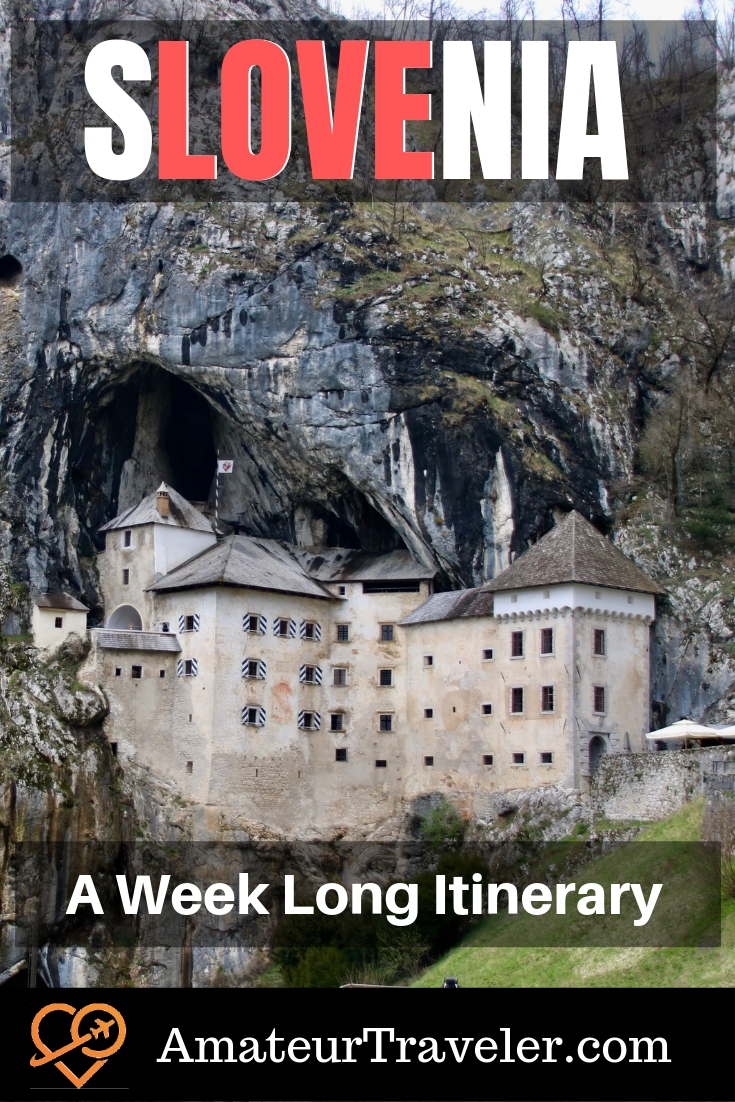
+Chris Christensen | @chris2x | facebook

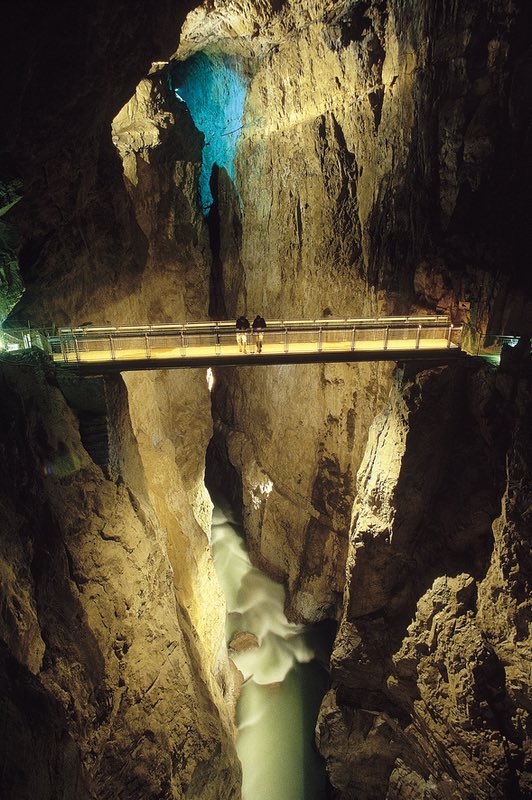
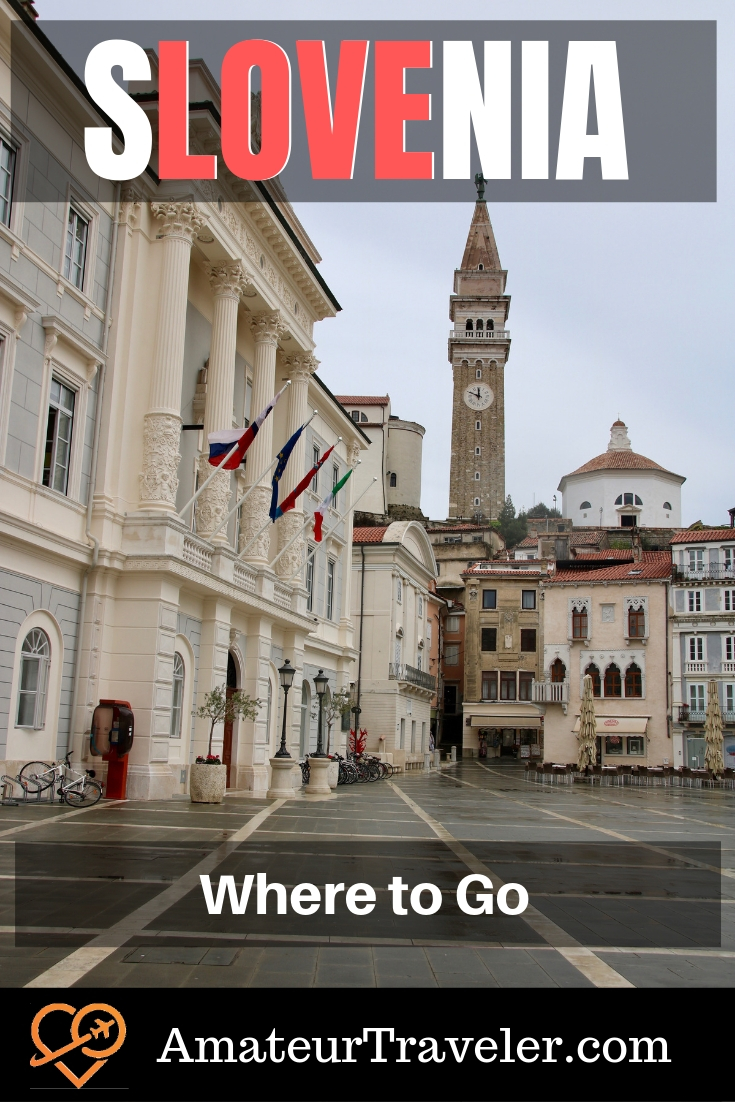



















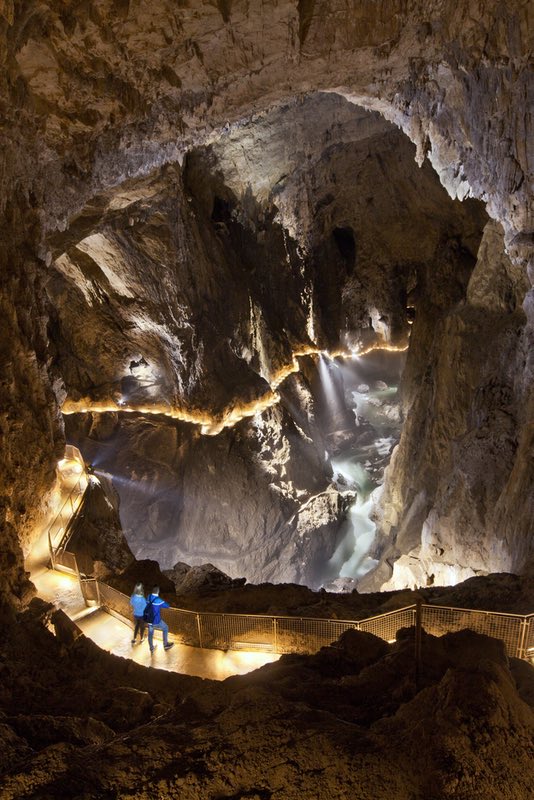

















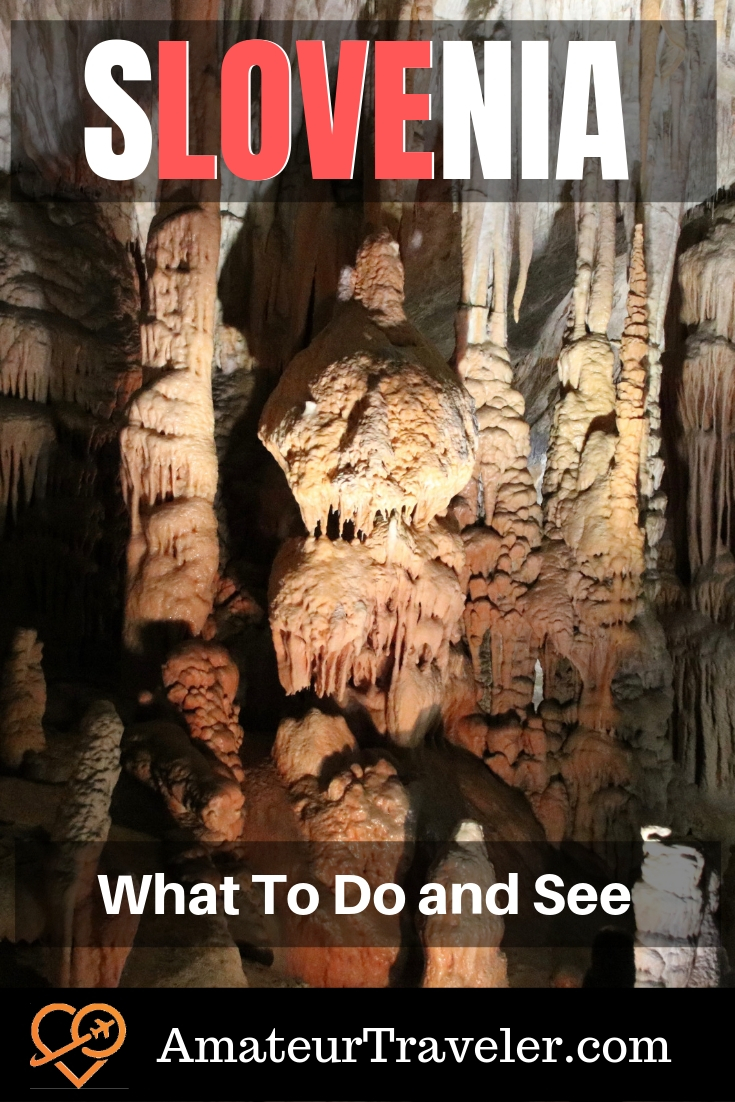
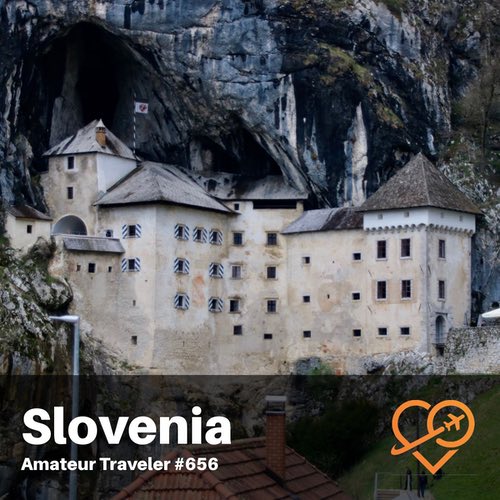 Travel to Slovenia – Episode 656
Travel to Slovenia – Episode 656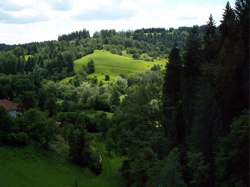 Travel to Slovenia – Episode 162
Travel to Slovenia – Episode 162 Travel to Slovenia – Episode 373
Travel to Slovenia – Episode 373 Wine and Ancestry in Slovenia
Wine and Ancestry in Slovenia
